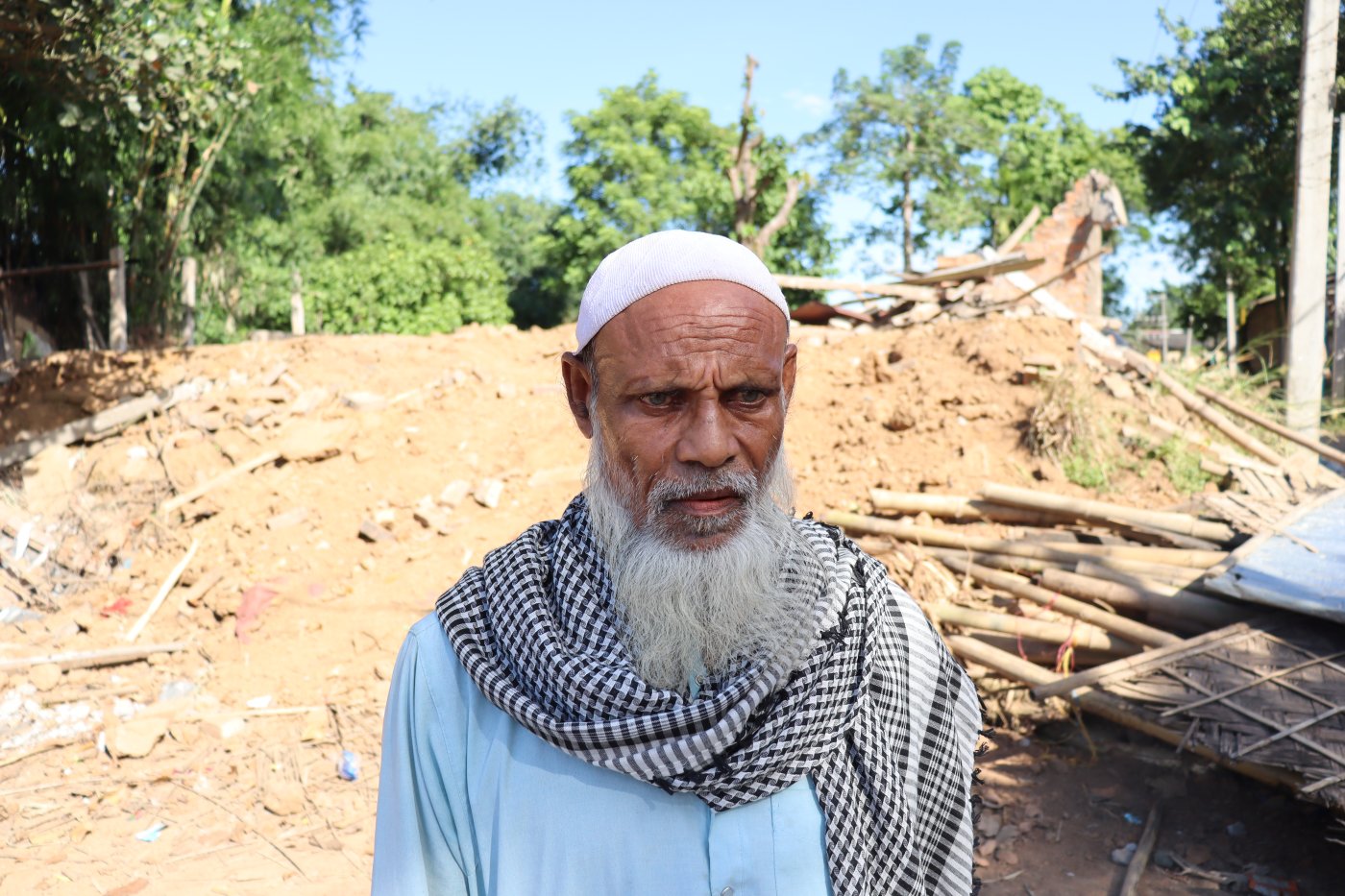Kamrup, Assam: On 25 September, a day after the Assam government demolished homes of Bengali-speaking Muslims from Kachutali 1 village on the outskirts of the state capital, Guwahati, close to 50 villagers filed a contempt petition against the government in the Supreme Court.
The petition said the Bharatiya Janata Party-led government violated the Supreme Court order on 17 September, which said there would be “no bulldozer action” across the country until 1 October. However, the division bench of Justice BR Gavai and Justice KV clarified in their order that the court would not intervene in demolishing illegal construction sites in public places. However, petitioners argued they had land deeds from the 1920s and were not on public land.
The eviction notice served to them by the local land and revenue office in Sonapur said they were in “unauthorised” and “illegal possession” of lands in a “tribal belt” which belonged to the protected class as per the Assam Land Revenue Regulation, 1886.
Villagers told Article 14 that 350 homes were demolished on 24-25 September. Nitul Khataniar, the revenue official of Sonapur town, which has jurisdiction over Kachutali 1 village, told the Press Trust of India that 340 homes were demolished.
The Supreme Court order suspending nationwide demolitions came from a batch of petitions, including from the Jamiat Ulama-i-Hind, a New Delhi-based Islamic organisation, against the punitive practice of bulldozing homes of people accused of crimes, which started in the northern state of Uttar Pradesh and was adopted by other states ruled by the Bharatiya Janata Party.
“Even if there is one instance of illegal demolition, it is against the ethos of the Constitution,” said the division bench during the hearing on 17 September.
On 28 September, the Supreme Court served the Assam government a contempt notice and stayed the ongoing demolition drive in Kachutali 1 in the central district of Kamrup. The court considered the petitioners' argument that the demolished houses were “private properties” as the petitioners had land titles from the original pattadars (land deed holders) from the 1920s.
Faruk Ahmed, a 50-year-old shopkeeper whose house was demolished, said the Assam government carried out the demolition drive on religious lines.
“Not a Hindu house was demolished,” he said over the phone on 30 September. The bulldozers were only reserved for us.”
When this reporter visited Kachutali on September 13, he saw Bengali and Assamese Hindu settlements in Parokuma and Beltiila unaffected by the eviction drive. The two Hindu pockets in Kachutlai 1 have a sizeable population of people from the non-protected class.
A Violent Eviction
The Kamrup (Metro) district administration carried out the first eviction in the village from 9 September to 11 September. Over three days, 237 structures were reportedly demolished in Kachutali 1, according to a report in The Indian Express.
This phase of eviction, however, turned violent on 12 September, leading to the state police open firing at protesting residents after alleged clashes between them and the officials.
Two Bengali Muslims—19-year-old Haidar Ali and 18-year-old Jubahir Ali— were shot dead by police, and 35 people, including locals and district officials, including police personnel, were injured.
Since coming to power in May 2016, the BJP-led government in Assam has been accused by minority rights groups and the political opposition of selective eviction drives to target the Bengali-speaking Muslim minority in the state.
Since BJP’s rise in 2016, over 10,620 families have been evicted from various districts in Assam.
Since coming back to power in 2021, Chief Minister Himanta Biswa Sarma has doubled down on vilifying the Bengali-speaking Muslims, accusing them, without evidence, of changing the demography, luring Hindu women, using excessive fertiliser, causing floods, and holding them responsible for an increase in crime, leading to attacks on them by radical nativist groups.
Sarma spoke of shutting down 600 madrassas in the state, saying that India needs “doctors and engineers, and not mullahs”, and alleged that four madrassas were used as an “office of Al Qaeda”. He launched a state-wide crackdown on child marriage, which further marginalised the community. He recently scrapped a two-hour namaz break on Friday for Muslim legislators in the state legislative assembly.
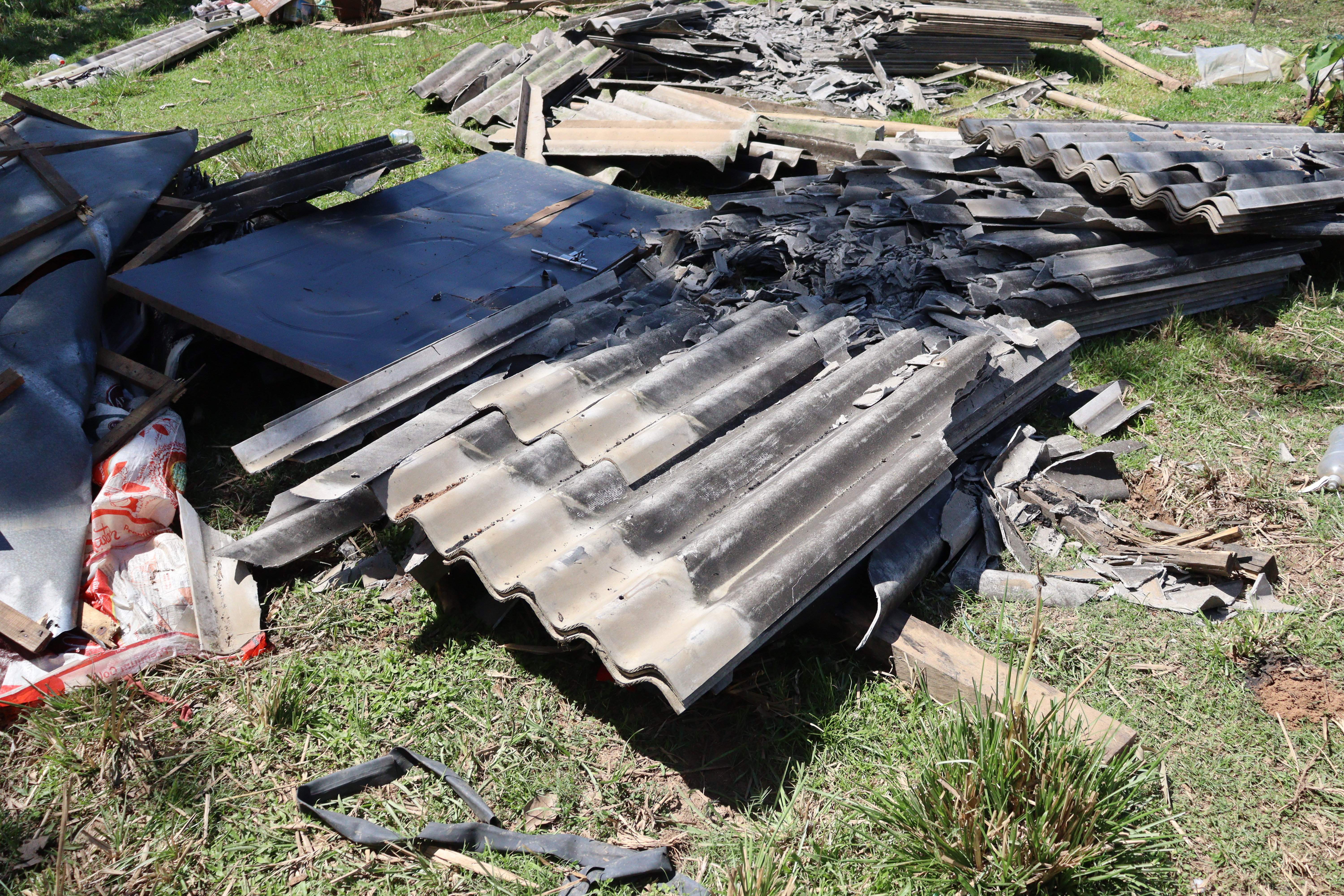
“They Kept The Trigger Running”
When it was first carried out on 9 September, the eviction had gone peacefully for the first three days in Kachutali 1.
As the families had nowhere else to go, they had also stacked their belongings, including foodgrains, under loosely erected sheds in a plot under a permanent land title.
Things turned ugly on 12 September when the police arrived at ten in the morning.
“As soon as they [police] arrived, they started destroying our foodgrains,” 18-year-old Taslima Khatun, a resident of Kachutali 1, said, showing the debris scattered around. “We kept begging them to give us at least two days to take our belongings out.”
The police did not budge and told them to “go back to the place they came from in two hours,” said Khatun. “Instead, the police started destroying the shed under which children were having their meals, polluting ten demolished wells (by throwing garbage).”
This act by the police angered the evictees, and women stormed out to resist.
“At least let our children eat in peace,” Taslima Khatun said, recalling what the women told the police in anger. “Please, do not harass us anymore.”
What followed later, according to them, was firing by the police, which injured people and forced men and women to come out with sticks charging at the police.
“This led to the police stepping up the firing,” Shahjahan Ali, a resident, said. “They kept the trigger running.”
The protesting evictees, according to Assam’s director general police, GP Singh, attacked government officials, including on-duty police, with “sharp weapons”, obstructing them in government duty and “causing grievous injuries with deadly intent.”
More than 20 government officials, mostly police personnel, were injured, said Singh.
“In the wake of such targeted attacks by miscreants, police also resorted to authorised use of force following due process,” he said.
Eyewitnesses contest the claims by the police.
“The police had everything, from guns to tear gas,” said Shahjahan Ali. “How can we even think of putting up a fight?”
On 23 September, Article 14 sent a detailed questionnaire to the state’s director general of police, GP Singh and the spokesperson for the Assam police, Prasanata Kumar Bhuyan, about the incident. We will update this report if they reply.
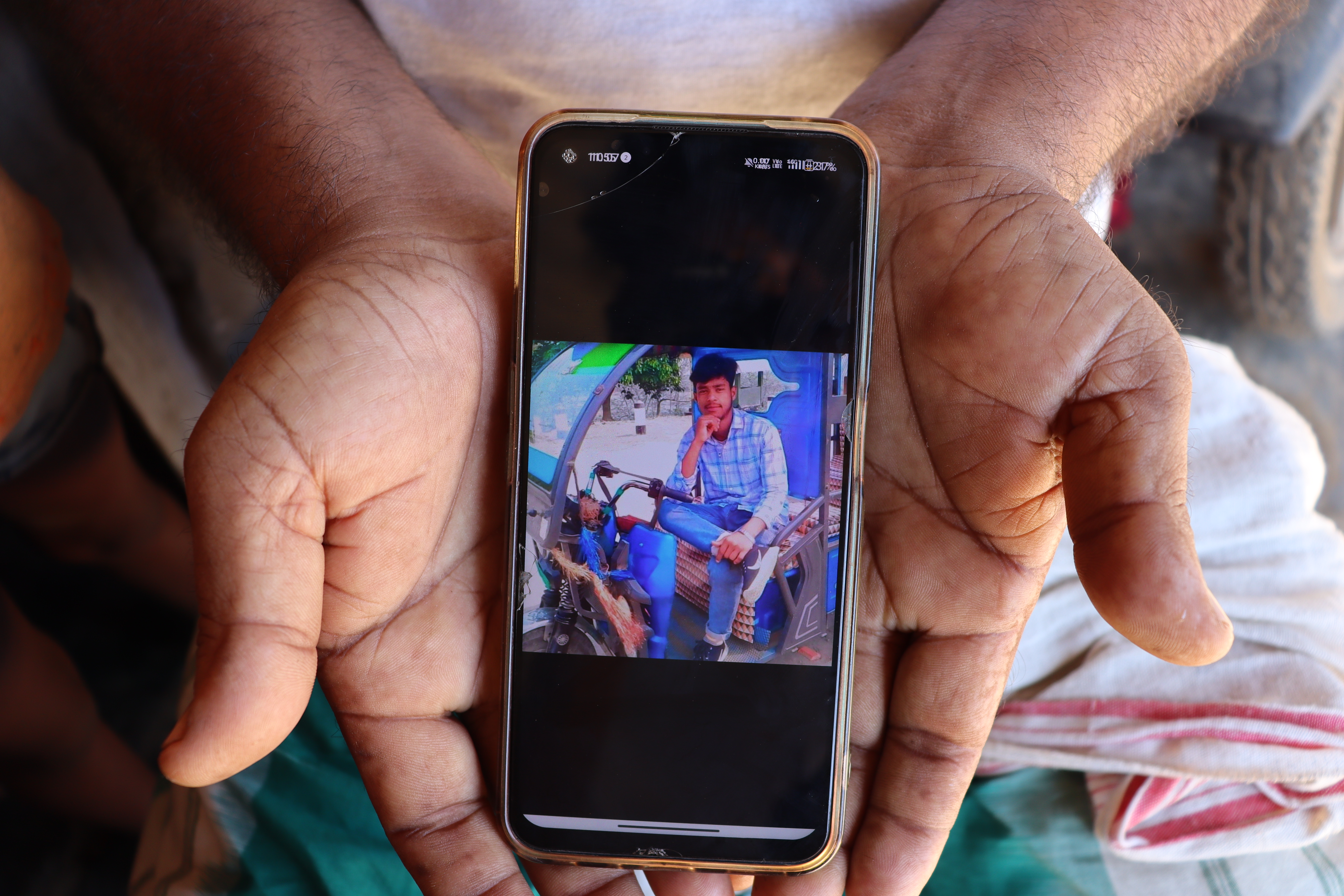
“Do Humans Kill Humans This Way?”
When we visited Haidar Ali’s home in Kachutali 1 on 13 September, his father, Maqbul Ali, 70, was inconsolable.
A frail Sharabanu Khatun, Haidar Ali’s mother, kept repeating: “Amar baba, duhan dito…rickshaw salaito (My son used to run a grocery shop and ply a rickshaw). My heart is on fire now.”
Haidar Ali was an e-rickshaw rider and the only breadwinner in the family, making the family’s ends meet.
On the day of the firing, Maqbul Ali said, the police shot at him when he was on his way to ferry back children from a school in Kachutali 2, a village one km from his village.
Ali was thrown into the pond after he died on the spot from the bullet injury, said Ali.
“His body was taken to the hospital three hours later,” he said in between sobs. “Our lives are made hell. Now, who will feed us?”
A similar story rings in Jubahir Ali’s house.
His body was ridden with bullets, according to his father, Gias Uddin.
“He was shot five to seven times, including at his private parts,” Gias Uddin said, breaking down. “Even after he gave up breathing, the police kept breaking his bones with the butt of their guns and lathis.”
Kulsuma Begum, an eyewitness and Jubahir Ali’s stepmother said he was returning from work when he came into the line of fire.
Like Haidar, Jubahir largely contributed to the family’s sustenance with odd jobs as a menial worker, earning Rs 300 per day. His dream was to buy a JCB machine and build a home for his family of five.
“They did not just kill him, they killed his dreams and us,” said Kulsuma Begum. “Do humans kill humans this way?”
Mrinal Deka, the deputy commissioner of police (DCP) responsible for law and order in east Guwahati, encompassing Sonapur, did not respond to repeated calls for comments.
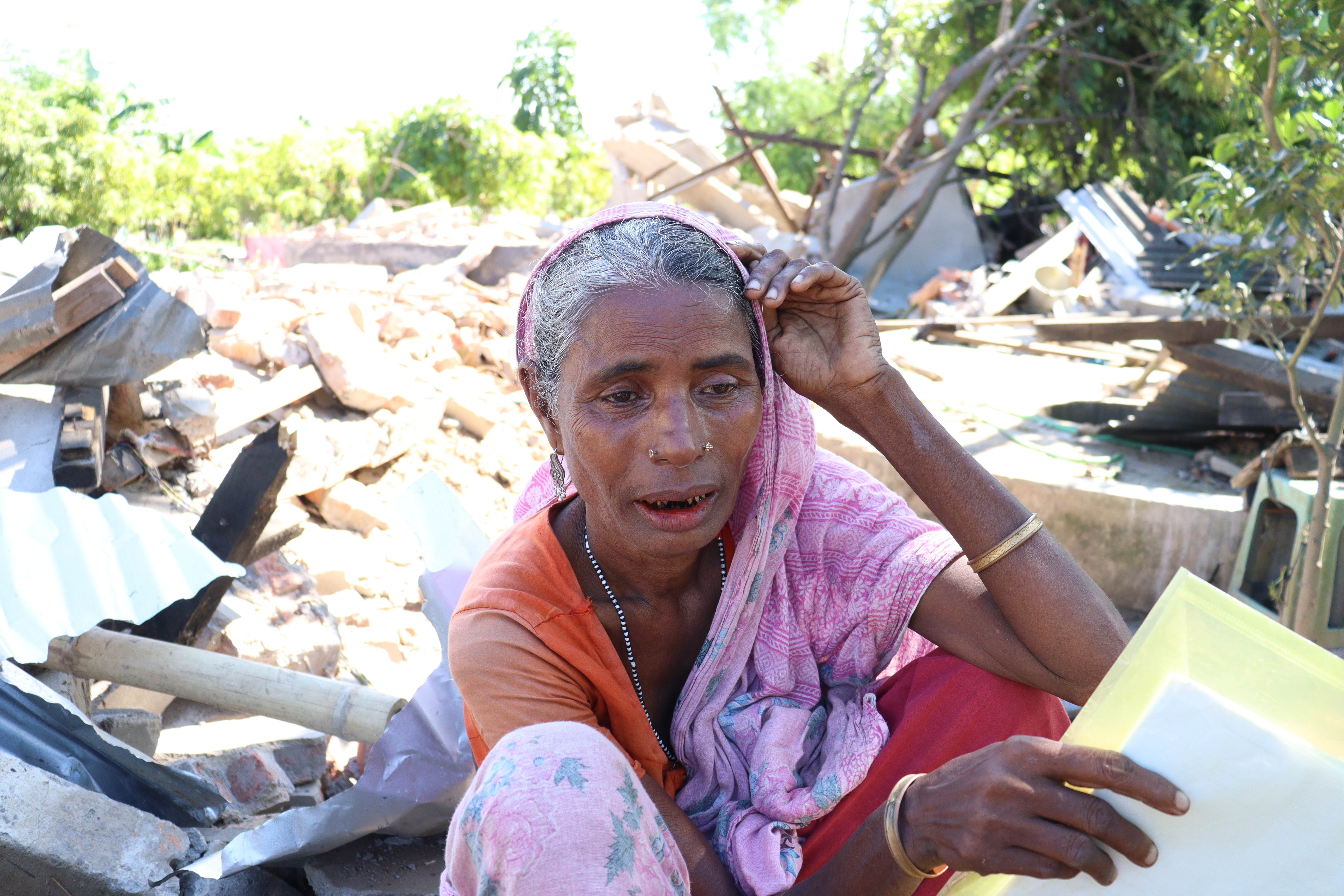
In Search Of Land
In Kachutali 1, Noorjahan, who goes by her first name, stood in tears by the rubble of her home bulldozed on 10 September.
Her son, Asadur Rahman, bought the land in 2018 for their house, which measures over 2,700 square feet, for Rs 85,000 from a third party, who purchased the land from a tribal person through a land-selling agreement.
“I worked as a daily wager, toiling for 15 hours a day to make this house,” 50-year-old Noorjahan said. “The debris is now the broken pieces of our lives.”
Her family has been living in the Kachutali area since the early 2000s, when they lost their house in Gasbari Char, across the north bank of the Brahmaputra river in the Darrang district.
The char or chaporis are low-lying floodplains and sandbars dotting the Brahmaputra river network in Assam. They are largely inhabited by Muslims of Bengali origins.
Like Noorjahan’s family, over 30 families Article 14 spoke to in Kachutali 1 and 2 had fewer options. These families had migrated to the low-lying Kachutali area since the 1970s following displacement due to river erosion in central Darrang and central Assam’s Morigaon district.
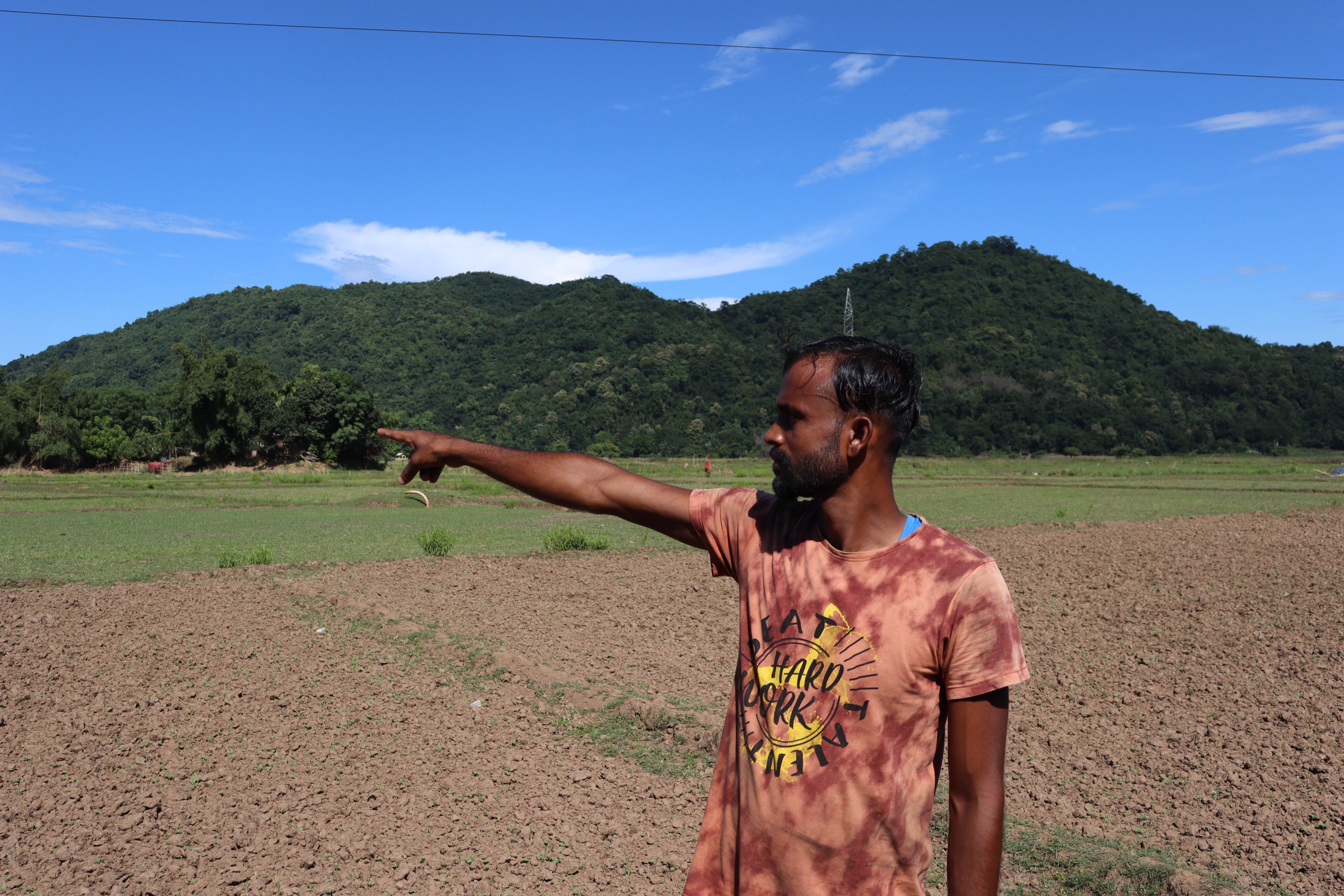
Some of these families, like Korim Ali’s, even have miyadi patta — a permanent land settlement in Assam—under the name of one Daneshwar Deka, an Assamese man, who signed the land agreement paper with his uncle, some 20 years ago.
“Their only recourse after settling in Kachutali was buying land from the tribals and local Sylheti-origin Muslims who have been living here for decades,” said a former president of Sonapur Panchayat, requesting anonymity. “These families had little idea that this land was under the tribal belt, and did not know that such lands cannot be registered under their names.”
Sylheti-origin Muslims are Muslims from the undivided Sylhet divison in northeastern Bangladesh, seen both as culturally and linguistically (they speak Sylheti) distinct from the Bengali-speaking Muslims within the 34% Muslim population in the state.
The pejorative “miya” is used for both communities in Assam.
In Assam, barring communities under scheduled tribes, land under the tribal belt and blocks can neither be bought nor transferred between non-protected classes.
Political ecologist, Juri Baruah, who teaches at DCB Girls College in eastern Assam’s Jorhat city, said these families are some of the “worst victims of river erosion”.
Assam loses, by an estimate, 8,000 hectares of land annually to river erosion by the Brahmaputra and its tributaries.
“As land is scarce in Assam and central to the idea of who is Assamese and who isn’t, these people suffer the most,” Baruah said. “Eviction becomes a lifelong circle for them.”
A Three-Day Ultimatum
The Sonapur Circle office, the local revenue office, served a notice on the night of 13 September asking residents in 1 No. Kachutali to “vacate the land within three days”.
These residents, the notice said, were in “illegal possession” of land belonging to about 290 recorded pattadars—over 200 of them with miyadi settlements—from the Scheduled Tribe community.
This notice has left families like Moinul Haque Choudhury’s on the edge.
His family is among the 200 Sylheti Muslim families who have lived in Kachutali 1 even before 1950—the year when the area was declared a tribal belt.
“We have settled here first between 1914 and 1918,” Moinul Haque Choudhury said, speaking over the phone. “Instead of protecting us, they [the government] are giving us just three days to vacate.”
The circle officer—the local revenue officer—giving them a three-day time before their eviction was like “hafta vasooli” (extortion), said Guwahati-based advocate Abdur Razzaqe Bhuyan. “It was like an ultimatum, the kind given by goondas (goons).”
He pointed out that section 165 (3) under the Assam Land Revenue Regulation, 1886, “itself calls for the issuance of notice at least 30 before the eviction”.
When Article 14 phoned Nitul Khataniar, the revenue officer of Sonapur, Khataniar said, “I am on leave, so I cannot comment.”
We also sent him detailed questions over email. The story will be updated if he responds.
Who Are The Rightful Heirs?
Tahazul Islam Choudhury, a Sylheti-speaking Muslim from Kachutail, said his family held land documents, including annual and periodic pattas going back to the 1920s to stake claims over the lands.
“We have lived here for nearly a century,” he said. “If anything at all, we should be recognised as tribals.”
Faruk Ahmed, the shopkeeper and petitioner, also claimed in the Supreme Court that he and the other petitioners held land titles under the power of attorneys exchanged between their forefathers and the original pattadars dating back to the 1920s when the area was not a tribal belt.
Bhuyan, the advocate, said the “whole eviction process was arbitrary” and “not in adherence” to the judgement passed by the Supreme Court in the case of Abul Khayer & Ors vs The State of Assam on 3 February 2020.
This judgement was in response to an appeal at the apex court after the Gauhati High Court ordered the eviction of non-tribals from the tribal belts in 2019.
The Supreme Court, in the 2020 judgement, said that the deputy commissioner (DC) must examine each occupant's claims before proceeding to pass appropriate order(s) as per law.
“The Supreme Court did not give a handle to the government that you can evict them without first hearing their claims,” Bhuyan said. “And even if found in unauthorised occupation of land, the court said the DC must give reasonable time to the people to take legal remedy.”
But here in this case, it was a betrayal by the government, families said.
As many as 49 people, mostly Sylheti-speaking Muslims from Kachutali, who were served an eviction notice, have moved the Gauhati High Court following the eviction notice on 13 September for their claims over the land.
The high court on 20 September stayed the eviction until 30 September and asked the deputy commissioner to hear the claims made by these families while keeping in mind the Supreme Court judgement.
However, Khataniar, the revenue official, told The Indian Express that the homes demolished on 24 and 25 September did not belong to those whose eviction was stayed by the high court on 20 September.
Our repeated calls to Sumit Sattawan, deputy commissioner for Kamrup Metro, did not get a response.
Detailed questions were emailed to him on 23 September. The story will be updated when he responds.
‘It Was A Communal Design’
The families we spoke to said the eviction was communal and targeted against the Muslims as Hindu houses from the non-tribal class were not evicted.
When we asked BJP’s spokesperson in Assam, Rupam Goswami, if the eviction was communal, he said the eviction “cannot be communal” as “only Muslims live in Kachutali”.
His claim, however, is strongly rejected by the locals and activists familiar with the eviction.
Of the 700-odd families in Kachutali 1 and 2, a substantial population, are non-tribal Hindus, according to the former president of Sonapur Panchayat.
“Some of them even settled on government land recently,” they said. “Their houses were not even touched by the government.”
Community activist and advocate Saddam Hussain said that in many pockets in Kachutali 1, there are areas dominated by both Assamese and Bengali Hindus who are non-protected.
“Why did the government only target the Muslims?” he asked. “The eviction was a communal design.”
Ahmed, the petitioner, said that while the Sonapur circle office marked their houses with red stickers on 13 September before the demolition, the Hindu houses, including those from the non-protected class, were not even touched.
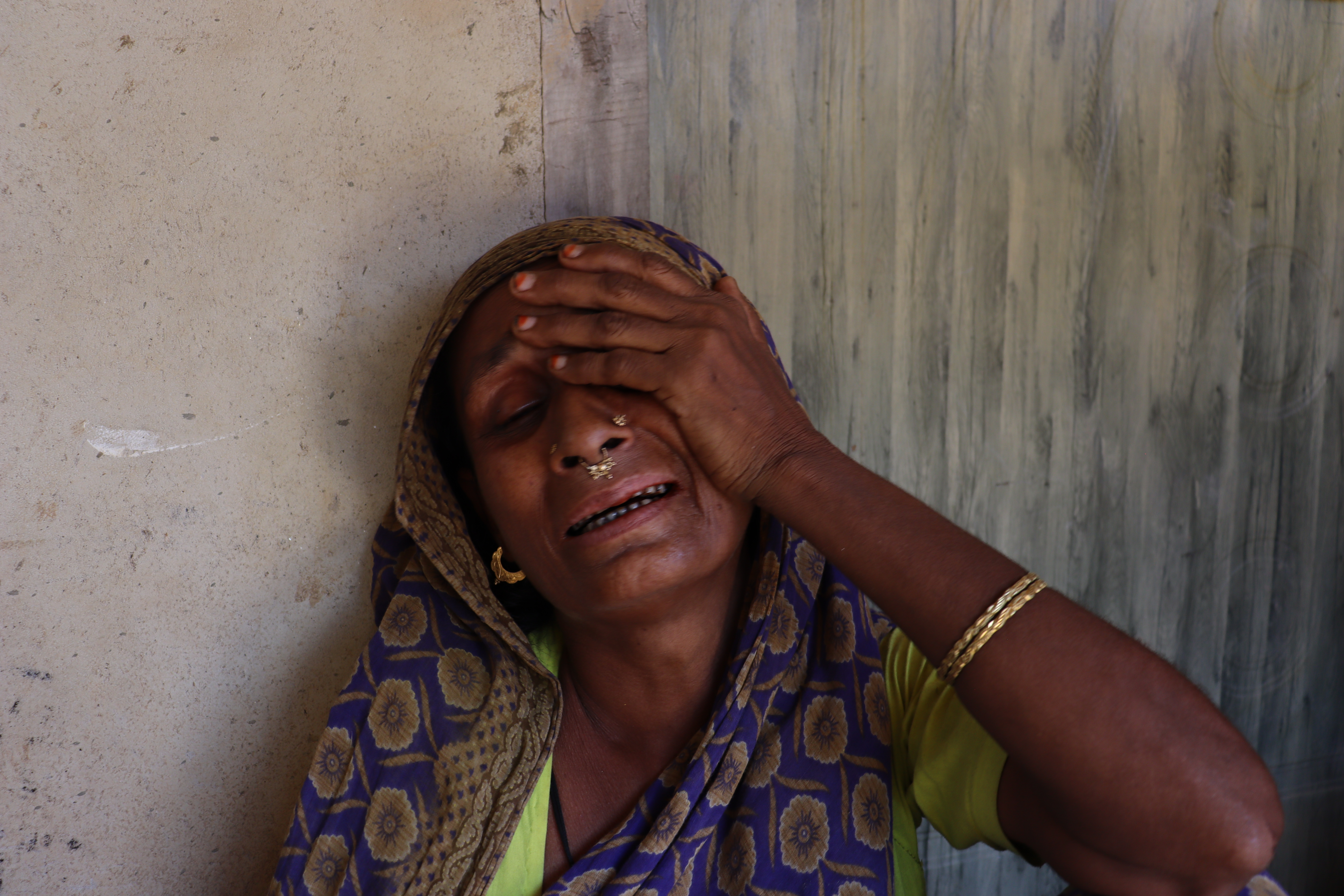
‘For How Long Will We Be Called Bangladeshis?’
“The presence of illegal immigrants in Sonapur poses a great threat to the tribal identity, tribal culture and tribal landscape,” Chief Minister Himanta Biswa Sarma told the media a day after the violent eviction.
His party’s X (formerly Twitter) handle labelled the evictees as “Bangladeshi encroachers”.
A radical nativist, Shrinkhal Chaliha from eastern Assam, said lands in the tribal belt must remain in the hands of tribals and not in the hands of “Bangladeshis”, adding that an AK-47 should be given by the chief minister to each tribal living here.
For 70-year-old Abu Taleb, a resident of Kachutali 1, the tags of being called “Bangladeshi” and “illegal immigrants” are inseparable from his identity.
“It is not the documents that make us Bangladeshis. It is our faces,” he said, standing by the ruins of his house. “For how long will we be called Bangladeshis?”
Others said when they used religious sloganeering—naare takbeer allahu akbar—as resistance against the police, Sarma said the same slogans were used in the student-led agitation against Sheikh Hasina’s erstwhile government in Bangladesh.
“Why are we not seen as just Indians?” asked 45-year-old Subur Ali, whose house given under a government scheme was also bulldozed in 1 No. Kachutali. “If Bangladeshis, why were we given houses under government schemes?”
Most families in the two villages we interviewed have their names on the National Register of Citizens (NRC).
The NRC was a state-wide citizenship screening programme in Assam that determined who entered the state before or on March 24, 1971, the cut-off date for citizenship.
Over 19 lakh people were excluded from the final draft of the NRC in 2019, of which seven lakh were Muslims and the rest were Hindus.
The BJP and the Assamese jatiyatabadis (nationalists) have rejected the NRC, citing an unsatisfactory number of excluded people.
Sanjib Baruah, professor emeritus of political studies at Bard College, New York, told Article 14, “Illegality is now associated with a particular ethno-religious community [Bengali-speaking Muslim] after a futile NRC.”
“It is no longer a matter of the actual citizenship status of an individual,” he said. “The recent evictions where this community [Muslims of Bengal origins] alone is targeted are a good example of this.”
Other Killings In Evictions Since 2016
The BJP in Assam planned to "remove encroachment” from all land categories before forming a government with its allies in 2016.
In the first eviction drive in September 2016 under the then-chief minister of the state, Sarbananda Sonowal, the Assam police shot dead two people—both Bengali-speaking Muslims—near Kaziranga National Park in Assam’s Nagaon district.
Four years later, in September 2021, during an eviction drive in a riverine village in northern Assam’s Sipajhar, the police shot dead two Bengali-speaking Muslims, including a 12-year-old boy.
The Congress Party in Assam has also called for an enquiry into the deaths from police firing of the September 2024 eviction in Kamrup.
“The police were firing indiscriminately,” the Assam Congress working president, Jakir Hussain Sikdar, said. “No one was spared, be it the people on e-rickshaws and those returning from work.”
According to Paresh Malakar, the general secretary of the Axom Nagarik Samaj—a collective of eminent citizens in Assam— including former police officers — the shootings in such evictions are a larger part of a pattern to whip up communal tension.
“It is deplorable that the police are working under the diktat of political leaders,” Malakar said. “Police should be working independently and thwart communal agendas.”
Meanwhile, the families of Jubahir Ali and Haidar Ali are resigned to the fact that there will be no justice for them as they grapple with new fears of retributive actions.
“For justice to happen, we will have to be seen as equals,” said Haidar Ali’s father, Maqbul Ali. “We, miyas, can only wait for it, though.”
“I have three other children,” Gias Uddin, Jubahir Ali’s father, said, who has left for Pabhakati, another erosion-hit riverine village in the Morigaon district. “I have to make sure that they are not killed the same way.”
(Arshad Ahmed is an independent journalist based in Assam who writes about human rights, politics, and marginalised communities.)
Get exclusive access to new databases, expert analyses, weekly newsletters, book excerpts and new ideas on democracy, law and society in India. Subscribe to Article 14.

